Blimp History
Goodyear Blimp (GZ20A)
Operated 1969 to 2017
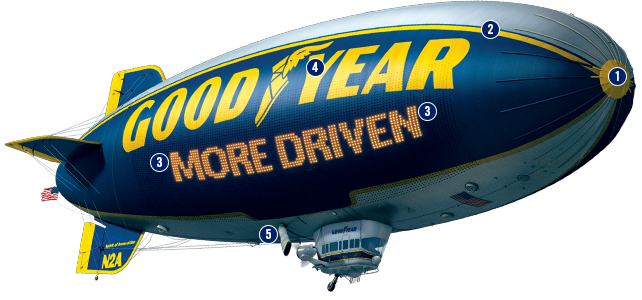

1. Nose Cone
One of the few external rigid points on the GZ-20’s envelope, it holds the battens, attachments for the nose lines and the mooring spindle.

2. Material
The largest component of the Blimp, the GZ-20’s envelope is made of two-ply, neoprene-impregnated polyester fabric.

3. Ballonet
Located in the forward and aft of the envelope, these air bags allow the pilot to regulate the amount of helium in the Blimp and statically trim the ship in a nose-up or nose-down situation.

4. Helium Valve
This safety valve — which can be operated manually and will also open automatically at a pre-set pressure — keeps the helium from exceeding the envelope’s maximum pressures.

5. Air Scoops
These devices take air that’s discharged from the propeller back up into the envelope to fill the ballonets when needed.
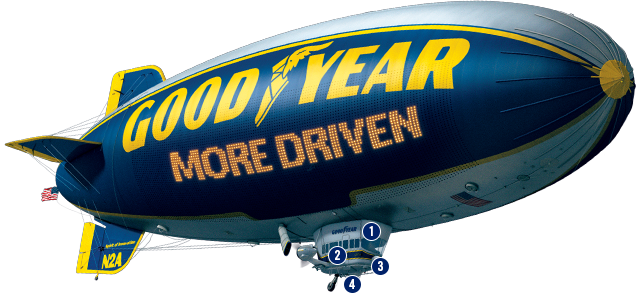

1. Construction
Made of aluminum on a welded steel frame, the gondola of the GZ-20 is 22.75 feet long and weighs in at just over 3,400 pounds.
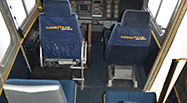
2. Seating & View
The gondola of the GZ-20 is capable of holding one pilot and six passengers, and offers spectacular aerial views to everyone aboard.

3. Weather Radar Dome
This device holds the cold-weather radar panel that keeps the pilot informed of current and impending weather conditions.

4. Avionics Antenna
Attached to the exterior of the gondola, this device allows the pilots to communicate with ground support and other aircraft.
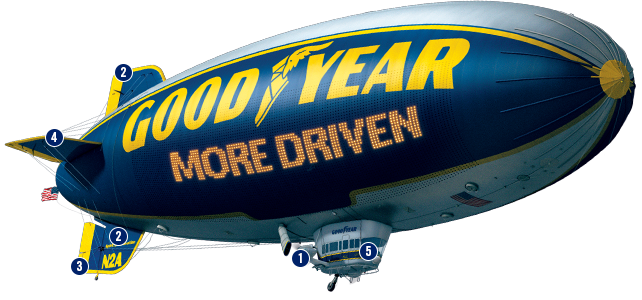

1. Engines
The GZ-20 uses two air-cooled, 6-cylinder, AVGAS fueled airplane engines that can propel the Blimp to top speeds of almost 50 miles per hour.

2. Rudder
Located at the rear of the envelope, the GZ-20 has top and bottom movable fins that control the left and right direction of the Blimp.

3. Boost Tab
This is a small movable part of the lower rudder that provides a passive assist to the main rudder movement.

4. Elevator
Also located to the left and right at the rear of the envelope, these movable fins control the up and down direction of the Blimp.
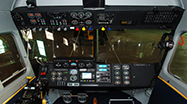
5. Controls
The prop pitch, prop reverse, throttles, rudder pedals, elevator wheel and other instruments, allow the to can control all aspects of the Blimp’s flight.
